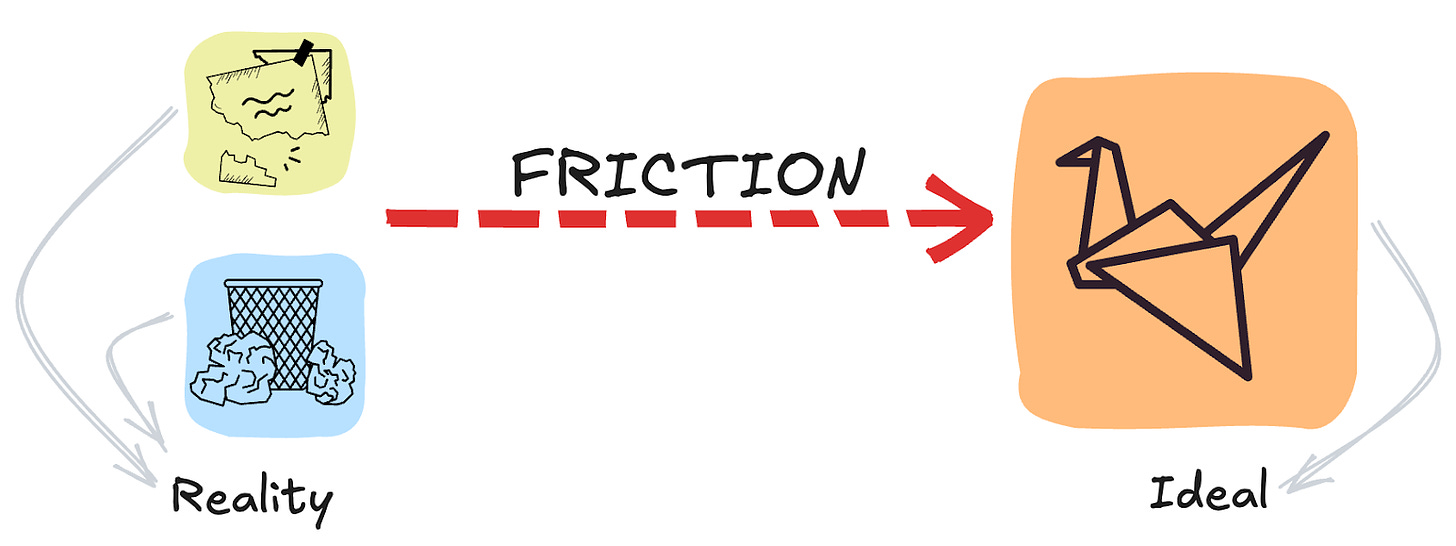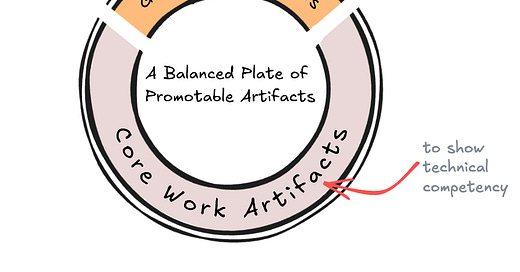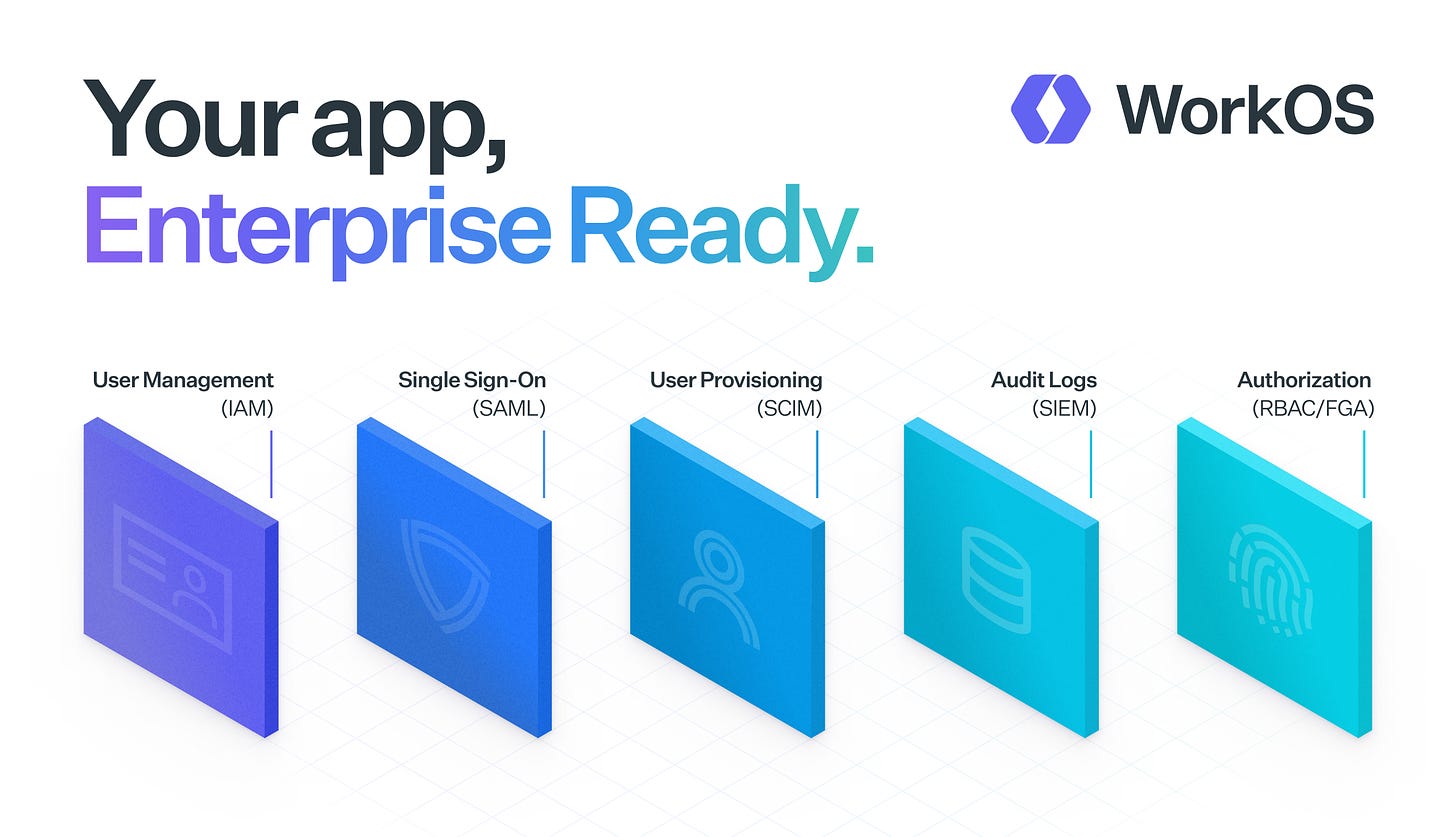3 Career Principles that got me to Director at Google
What helped me get 5 promotions in 10 years at Google
📣 Build Your App The Right Way (Sponsor)
If you’re building a B2B SaaS app, WorkOS is for you. WorkOS makes selling to enterprises possible in minutes rather than months. They provide SSO, SCIM provisioning, user management, and more out of the box.
They also power the hottest companies like Perplexity, Vercel, and Plaid.
Hi fellow High Growth Engineer, Jordan here 👋
Today’s article features a special guest, Chaitali Narla, ex-Google Director. Chaitali’s career growth is insane. It’s one of the fastest journeys I’ve seen to Director, averaging one promotion every 2 years for 5 promotions straight. Especially at Google, that’s highly uncommon.
In this article, she’ll walk you through the 3 career principles she realized led her to Director so quickly.
Without further ado, I’ll pass the mic 🎤 to Chaitali 👏
At Google, I got 5 promotions in 10 years—from L3 (recent grad) to L8 (engineering director). I did all this while going through life milestones like becoming a new mom and no, I didn’t compromise on sleep or burn out. It was sustainable!
In today’s post, I discuss the “Macros”—three key ingredients I needed in large doses to make this journey possible.
🍱 Career Macros
Nutritionists recommend that a healthy, nutritious diet consists of Macros and Micros. Your body needs macros in large quantities, like carbs or proteins. You also need micros but in much smaller doses, like vitamins.
An engineering career is also composed of Macros and Micros. Ingredients like Creativity and Stage Presence are the Micros. They’re necessary but not every day and not in large quantities.
The Career Macros for fast growth are Glue, Grit, and Friction.
1) Glue
Something happened in my second year as an L4 engineer. I wanted to grow to Senior Engineer (L5). It felt like I had so many responsibilities on my team. I was always 1:1ing with junior members. I reviewed designs and talked to partner team contacts. The list goes on!
Then came the worst calibration of my career. After all that extra work, I got a "Meets Expectation" at L4. 😮 I was doing things well beyond that level. What happened?
Then, a mentor pointed me to Tanya Reilly’s excellent talk about Being Glue. She defines “Glue work” as the less-glamorous tasks. They’re vital for a team's success but might not count as promotable work.
Here is her memorable quote on Glue work:
Managed deliberately, glue work demonstrates and builds strong technical leadership skills.
Left unconscious, it can be career limiting. It can push people into less technical roles and even out of the industry.
-Tanya Reilly
I realized I was doing too much Glue work and too little core work. That led to an unexpected, low-performance rating. The key was to do everything in balance and not over-indulge on any one thing. It meant choosing just a few Glue work items to continue and DROPPING all others! Focusing on only a few glue work items freed up more of my time to design and code, leading to my L5 promotion.
Now you might wonder, why not give up ALL Glue work completely?
The answer lies in Promotable Artifacts—they prove your readiness for the next level.
Code and design docs are good artifacts to show technical competency for a promotion case. But adding Glue work artifacts completes your packet with strong leadership examples.
Continuing my earlier story, here are a few Glue artifacts I started creating:
In meetings I led, I took notes and circulated them with our partner teams. This documented my influence on technical decisions across teams. It showed my cross-functional technical leadership.
I sent my manager monthly summaries of the designs I reviewed and the changes made. It showed my technical leadership. It also helped my manager get a monthly overview of everything happening in the team, which boosted his sponsorship for me!
I had a career talk with my manager. I asked for help getting senior peer reviews that praised my leadership in completing important milestones. The “leadership” was the Glue work I was doing!
I continued leveraging Glue work this way for my promotion to Staff (L5->L6).
2) Grit
I wasn’t the smartest student in school or college. Yet, I consistently managed to get good grades in my academic journey. Neither was I the smartest employee at Google by a long shot. Yet, I grew my career from intern to director within a decade.
What was the one common trait in my academic and professional journeys that helped me stand out? I didn’t give up—what Angela Duckworth calls Grit.
As you grow in your career, problems will become bigger and bigger. They’ll stop taking weeks and months to solve and start taking quarters and years. These problems don’t have any magic solution or shortcut. But if solved, you’ll make a huge impact on your company’s business. With Grit, you can build a career solving such problems and earning the credits that come from it.
When I was a tech lead/manager (L6) on Google Compute Engine, its largest component, the control plan, shipped as a monolith. Development was painful, release velocity was slow, and bugs were plentiful. There was no single, magical solution to resolving all these problems. It just required Grit through time.
Here’s how I used Grit for my promotion to Senior Engineering Manager (L6->L7):
Stay focused but stay visible: This was a long project. It took our team over a year to pay down the tech debts to make things faster and easier to work with. However, we couldn’t disappear in a hole for that long and emerge with a shiny new system. I broke the long project into quarterly deliverables but also talked often about the end goal and kept our leadership informed of our progress. My team also celebrated the small victories from hitting our milestones each quarter!
Failures are progress: Working in an ambiguous space, we’d often have a hypothesis like, “Project X will make the build faster,” only to find out months later we were wrong. The trips back to the drawing board to rework a failed hypothesis were the norm. I normalized and even rewarded failure in my team. It helped us stay motivated and focused on finding solutions that worked.
Take a break: Staying focused for over a year is difficult without breaks. I created ways for my team to take breaks from problem-solving. I did short icebreakers at the start of our weekly meetings to break the monotony. I organized team events (escape rooms, bowling) to help us connect. I also pushed for “production freeze” weeks with no releases. They would give us a breather on this grueling project.
3) Friction
Without realizing it, you’ve probably encountered Friction in your company.
Friction is the gap between how things are and how they should be.
Here are a few examples of Friction that you’ve likely experienced:
Outdated documentation that nobody owns
Dead code that still lives in your codebase and periodically breaks your build
Design docs with unclear status, written by someone who left the team/company long ago
Misunderstandings between engineers and product managers on the requirements of a new feature
Disagreements between teams on what a P0 deliverable should be on their roadmap

If you’re a senior leader (Staff+ engineer or manager) and want to become an exec, you must learn to “unblock your team” when they get stuck. When you “unblock your team,” you’re resolving Friction. Unblock them enough times, and you’ll have a portfolio of work that shows your readiness for an executive role!
Let’s analyze one example of how overcoming Friction helped me get promoted to Director (L7->L8).
My team depended on a service that was sparsely staffed. The service was great, but it lacked features we needed, which started affecting our customers. If we were to build a copy of the service with our features, it would be way too expensive. We needed to find a way to work with the other team. My team’s engineers researched the missing features, prioritized them, and wrote detailed specs for the top three features. Still, this other team wasn’t even putting our requests on their roadmap!
I recognized the friction and facilitated a discussion between my tech leads and the other team’s tech leads. We decided that since staffing was the issue, instead of waiting for the dependency team to find time, we’d send engineers from my team to work in their codebase to fulfill our requests. We had a long negotiation to build trust and cooperation since we’d be modifying their code. After we finalized the agreement, the Friction disappeared. My team was unblocked and made progress toward our goal of excellent customer service!
This was just one example of overcoming Friction. But doing this enough times and unblocking the team showed me as a force multiplier—ultimately leading to my promotion to Director after just 2 years.
📖 TL;DR
Glue, Grit, and Friction are Chaitali's Career Macros. They were key to her journey from intern to director, with 5 promotions in 10 years at Google.
Glue: The less-glamorous stuff that helps a team succeed
Strike the right balance between glue and core work. Do enough glue work to show leadership promotable artifacts, but not too much to where your core work suffers.
Lead meetings, take notes, and share them to provide value to the right stakeholders.
Send your manager monthly recaps of your accomplishments so they can more easily sponsor you and your work.
Grit: The will to pursue a long-term goal despite challenges
Break your projects into achievable milestones so you can constantly feel progress, even for long projects.
View failures as progress. It’s one less route you need to explore now.
Take breaks and work in fun. I set up icebreakers at the start of our meetings, organized team events, and pushed for production freezes.
Friction: The gap between reality and the ideal state
Find ways to unblock yourself and the people around you. Do this enough, and you’ll have mastered removing friction.
Removing friction paints you as a force multiplier. Force multipliers get promoted.
🙏 Thank you to Chaitali
Jordan here again 👋
Thank you to Chaitali for sharing these 3 career principles that helped her get to Director at Google in just 10 years, along with practical strategies for how to apply them.
To learn more from Chaitali, I highly recommend following her on LinkedIn and checking out her newsletter,
(also one of the best newsletter + first name combos I’ve ever seen 😄).👏 Shout-outs of the week
How to stay calm under pressure on
— Relatable article on high-stakes situations you deal with as an engineer and how to handle them.- — Torsten is a Director at Rippling and an up-and-coming creator who, like me, has actionable advice top-of-mind. I highly recommend checking him out and this article on estimating.
Codecrafters.io — Great resource for building your technical skills. Build your own interpreter, HTTP Server, Sqlite, Grep, etc. with walkthroughs and explanations.
Thank you for being a continued supporter, reader, and for your help in growing to 76k+ subscribers 🙏
Next week, we’ll feature Staff Engineer and system design pro, Maxi Ferreira. Maxi recently released a free frontend system design course and his article will teach you how to tackle one of the most common problems all software engineers need to deal with—migrations. I’m super excited for this one!
You can also hit the like ❤️ button at the bottom of this email to help support me or share this with a friend to get referral rewards. It helps me a ton!








